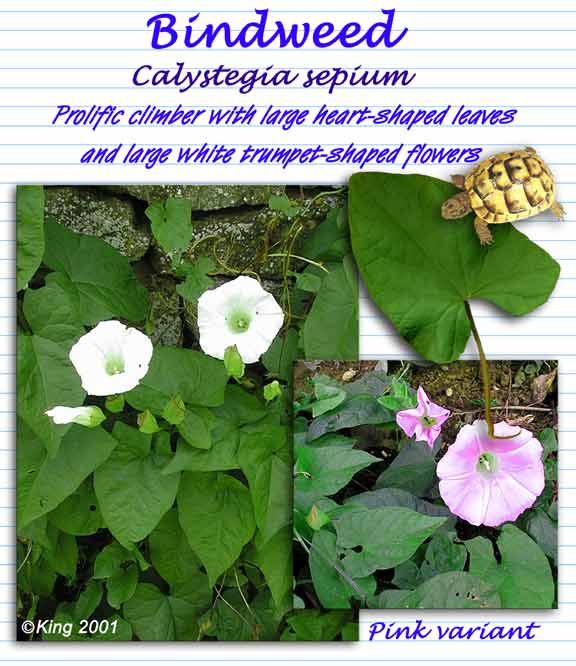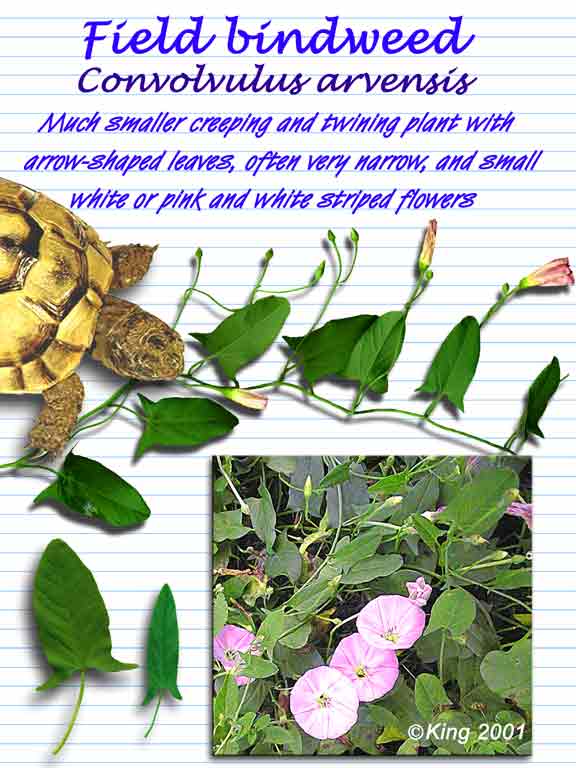



|
Tortoises love bindweed, and it is a useful addition to the diet later in the summer when other edible plants may be scarce. However don't overdo it, as it can be somewhat purgative and laxative. The smaller Field bindweed, being milder in this respect, is the better one to choose. As always, pick only from unpolluted places and wash well before feeding if picked from outside your garden. It is advisable to remove the leaves from the vine before feeding to avoid the tortoise getting tangled or even injured. Note: Take care not to confuse these climbers with the hallucinogenic (blue-flowered) Morning Glory (Ipomea volacea). Do not confuse either with Black bindweed, Polygonum convolvulus (high in oxalic acid) which has no trumpet-shaped flowers but tiny pale ones:
- or with Black Bryony (Tamus communis) which has toxic elements (saponins in the whole plant and calcium oxalate crystals in the berries). This has much glossier leaves, lacks the trumpet-shaped flowers, and has red berries after flowering.
From
Encyclopaedia Britannica: |
Back to Edible Wild Plants list (free download of illustrations available)
All graphics and text in this site © L King 1998-2015